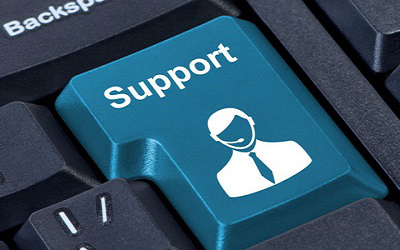IT Support Santa Fe
If you have owned a computer for a long time, you may have realised that some of them start to become overwhelmed over time. They become slower and produce some rattling sounds. In extreme cases, these computers may begin to overheat. IT support in Santa Fe can help fix some of these problems. Most computer issues are fixable, and in this article, we will discuss how to stop your computer from overheating.

Why do computers overheat?
Overheating happens in a computer for different reasons. Most of these reasons compound on one another and gradually make the overheating worse. Some significant causes of computer overheating include inappropriate positioning, dust buildup, the cooling system’s malfunction, and heat-emitting components. Luckily, IT Support in Santa Fe have ready solutions for you on how to fix these issues.
What Does IT Support Santa Fe recommend to fix computer overheating?
How to Resolve Computer Overheating?
There are several ways to tackle computer overheating, from basic to advanced solutions. IT support Santa Fe recommends the following fundamental measures.
- Apply additional thermal paste to the CPU
- Open the PC and Clean it up
- Check the fan and adjust its speed
- Avoid Overclocking the CPU-Provide Strong Tag
1. Apply additional thermal paste to the CPU
There are different ways of applying extra thermal paste to the CPU and other processors. These include the line method and the grain of rice method. However, when applying more paste, the bottom line rule is to make sure you have the right amount. Too much paste or insufficient thermal paste both have undesirable results. IT Support Santa Fe recommends using the grain of ice method-also known as the dot method to apply to the paste. This method eliminates numerous possibilities of an error.
To do this, wipe the surface of your CPU to make it clean, squeeze out a reasonable amount (the size of a rice grain) of thermal paste in the middle of the CPU. Carefully place your CPU back, while avoiding any unnecessary turning –this is to prevent uneven spread of the paste on the die area.
2. Open the PC and Clean it up.
Clogging of dust and other materials inside the computer may cause overheating. For this reason, IT Support Santa Fe advises you to perform routine maintenance frequently. Cleaning up your PC can solve overheating problems, and here is how we recommend Santa Fe college online students to do.
Open up the casing of the machine and blow out the dust with compressed air. You should also pay close attention to the fan area. Using a soft cloth or brush, you should wipe the surfaces around the fan area to make sure no clogging occurs. For better results, you may need to open up the fan system further and clean it up. This requires technical knowledge that can easily be offered by IT support Santa Fe.
3. Check the fan and adjust its speed.
Fans are vital in the cooling system of the computer. A broken fan should be replaced immediately to prevent the computer from overheating. The speeds of the fan are determined by the amount of work your CPU is performing. When your CPU is overworked, fans tend to run at extremely high speeds attempting to cool down the CPU.
There are several ways to control the revolutions per minute of the cooling fan. IT support Santa Fe recommends the use of the BIOS menu to adjust fan speeds. When you enter the BIOS menu, scroll through to the “Status” or “Monitor” submenu and select the “Fan Speed Control” option. In the RPM section, you can adjust the speeds by choosing from the available options and pressing Enter. Save the changes and exit BIOS. This method has helped Santa Fe College online students correct overheating problems.
4. Avoid Overclocking the CPU-Provide Strong Tag
Overclocking the CPU and GPU is a standard practice among gamers and other performance-oriented computer users in Santa Fe College. Although it is a great way to maximize the power of your machine, it can cause increased heat. CPUs and GPUs generate a lot of heat when they are overclocked, and this necessitates for a remedy. Overclocking these processors requires you to set up an elaborate cooling system to counter the heating effects.
When your computer overheats due to CPU, GPU, or RAM overclocking, you should consider restoring the clock speed to its original rate to prevent further damage. Sometimes when the overheating is too much, you can “underclock” the CPU or the GPU to minimize heat. The concept of overclocking RAM, CPU, or GPU is advanced; therefore, you should consider contacting IT support Santa Fe for assistance.
There are many other ways that IT support Santa Fe would recommend to fix overheating of your computer. All the solutions are personalized and dependent on the specific diagnostic issues shown by the computer. For computer users in Santa Fe College, and businesses around, J and J Technical Services offers world-class IT support in Santa Fe that you can benefit from. Contact us today for assistance with your overheating problems.

Comments
Post a Comment